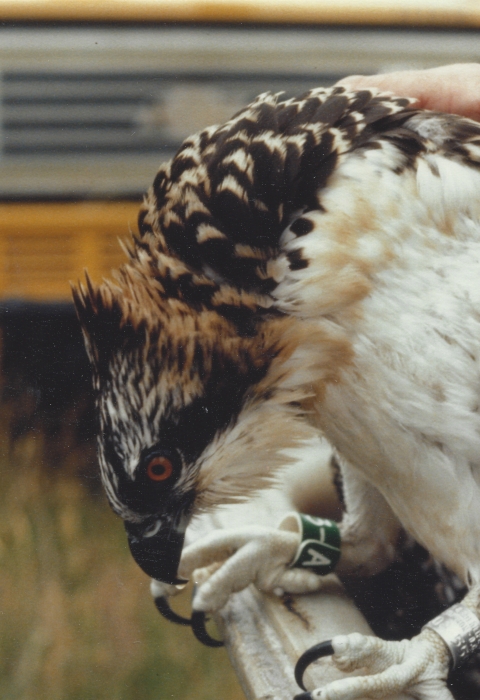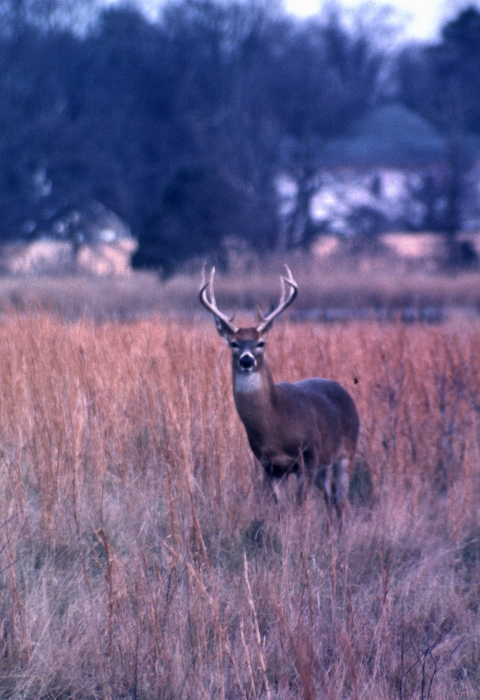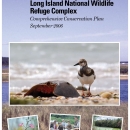The refuge is only open to select public use activities (e.g., biological research, environmental education) by Special Use Permit, and hunters with Refuge Permits during specified times.
Visit Us
The refuge is only open to select public use activities (e.g., biological research, environmental education) by Special Use Permit.
Location and Contact Information
About Us
The refuge, located in Islip on the south shore of Long Island, consists of 209 acres bordering the Great South Bay, and is separated from the Atlantic Ocean by Fire Island. With its diverse mix of upland and wetland habitat types, Seatuck hosts more than 200 bird species, and serves as an oasis in a heavily developed urban area.
Upland Habitat
Upland habitats form about half the area of the Seatuck National Wildlife Refuge, including old fields, brush, and woodland habitats. The upland habitats are equally divided between mixed-oak woodland, red maple stands, upland shrub, and grasslands, and includes pine barren habitat. Seatuck Refuge holds the potential to be a transplant site for the federally endangered plant, sandplain gerardia, because of its soil type and associated grassland plants.
Saltmarsh
The remaining half of Seatuck Refuge is saltmarsh, consisting largely of salt hay with scattered stands of Phragmites, an exotic and invasive plant. Freshwater wetlands and ponds provide a significant water source for wildlife. The bulk of the aquatic habitats include saltmarsh and subtidal types. The U.S. Fish and Wildlife Service Northeast Estuary Office has classified the Seatuck Refuge as part of the larger Great South Bay and declared the Refuge a significant coastal habitat.
What We Do
Wildlife conservation is at the heart of the National Wildlife Refuge System. It drives everything on U.S. Fish and Wildlife Service lands and waters managed within the Refuge System, from the purposes for which a national wildlife refuge national wildlife refuge
A national wildlife refuge is typically a contiguous area of land and water managed by the U.S. Fish and Wildlife Service for the conservation and, where appropriate, restoration of fish, wildlife and plant resources and their habitats for the benefit of present and future generations of Americans.
Learn more about national wildlife refuge is established to the recreational activities offered to the resource management tools used. Using conservation best practices, the Refuge System manages Service lands and waters to help ensure the survival of native wildlife species.
Refuges deploy a host of scientifically sound management tools to address biological challenges. These tools span active water management to wilderness character monitoring, all aimed at ensuring a balanced conservation approach to benefit both wildlife and people.
Our Species
Seatuck National Wildlife Refuge is home to a variety of species including over 200 bird species many of which are protected under the Migratory Bird Act. Its is also home to a variety of marine species such as striped burrfish, blue crabs, and horseshoe crabs.
Projects and Research
Management Goals
Seatuck National Wildlife Refuge is actively managed for migratory birds, particularly waterbirds and raptors, and to maintain and enhance habitat diversity.
Both upland and wetland habitats at the Seatuck Refuge are actively managed. Wetland management activities conducted at the refuge include restoring tidal flow, blocking manmade drainage ditches, open marsh water management, and wood duck nest box maintenance. Upland management activities include erecting osprey nesting platforms, brush hogging grasslands and upland shrub habitats, prescribed burning, restoring derelict lands to native habitat, white-tailed deer management, songbird nest box program, and an owl monitoring program which is conducted by the South Shore Audubon Society.
Wildlife monitoring conducted at the refuge includes waterbird surveys, migratory songbird and raptor surveys, white-tailed deer counts, and mosquito sampling.


